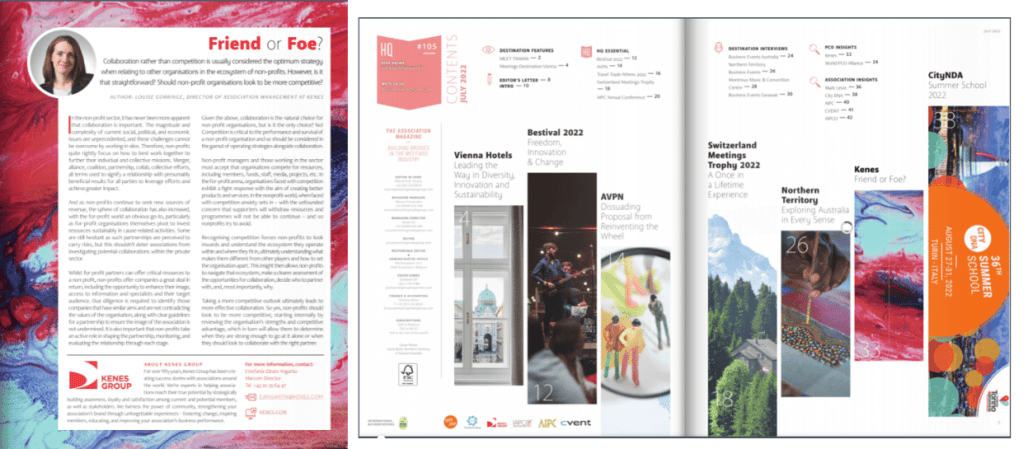
In the non-profit sector, it has never been more apparent that collaboration is important. The magnitude and complexity of current social, political, and economic issues are unprecedented, and these challenges cannot be overcome by working in silos. Therefore, non-profits focus on how to best work together to further their individual and collective missions. Merger, alliance, coalition, partnership, collab, and collective efforts, are all terms used to signify a relationship with presumably beneficial results for all parties to leverage their efforts and achieve greater impact.
As non-profits continue to seek new sources of revenue, the for-profit world is an obvious go-to, particularly as for-profit organisations themselves pivot to invest resources in cause-related activities. Some are still hesitant as such partnerships are perceived to carry risks, but this shouldn’t deter associations from investigating potential collaborations with the private sector.
Whilst for-profit partners can offer critical resources to a non-profit, non-profits can offer companies a great deal in return, including the opportunity to enhance their image, access to information and specialists and their target audience. Due diligence is required to identify those companies that have similar aims and are not contradicting the values of the organisation, along with clear guidelines for a partnership to ensure the image of the association is not undermined. It is also important that non-profits take an active role in shaping the partnership, monitoring, and evaluating the relationship through each stage.
Given the above, collaboration is the natural choice for non-profit organisations, but is it the only choice? No! Competition is critical to the performance and survival of a non-profit organisation and so should be considered in the gamut of operating strategies alongside collaboration.
Non-profit managers and those working in the sector must accept that organisations compete with others for resources including – members, funds, staff, media, projects, etc. In the for-profit arena, organisations faced with competition exhibit a fight response, aiming to create better products and services. In the non-profit world, when faced with competition anxiety sets in, with the unsubstantiated concern that supporters will withdraw resources and programs will not be able to continue.
Recognising competition forces non-profits to look inwards and understand the ecosystem they operate within and where they fit in, ultimately understanding what makes them different from the other players and how to set the organisation apart. This insight then allows non-profits to navigate that ecosystem, make a clearer assessment of the opportunities for collaboration, decide who to partner with, and, most importantly, why.
Taking a more competitive outlook ultimately leads to more effective collaboration. So yes, non-profits should look to be more competitive, starting internally by reviewing the organisation’s strengths and competitive advantage, which in turn will allow them to determine when they are strong enough to go at it alone or when they should look to collaborate with the right partner.
This article was originally published in the Summer Edition – Headquarters Magazine #105 “Partnerships for Growth” – July 29, 2022 (page 33): https://bit.ly/3KqWryx